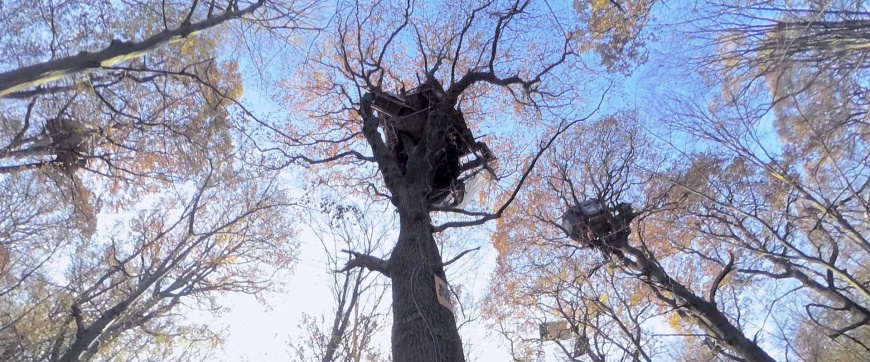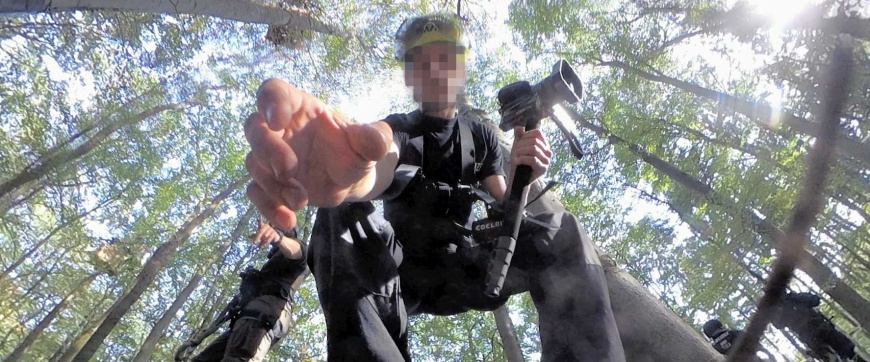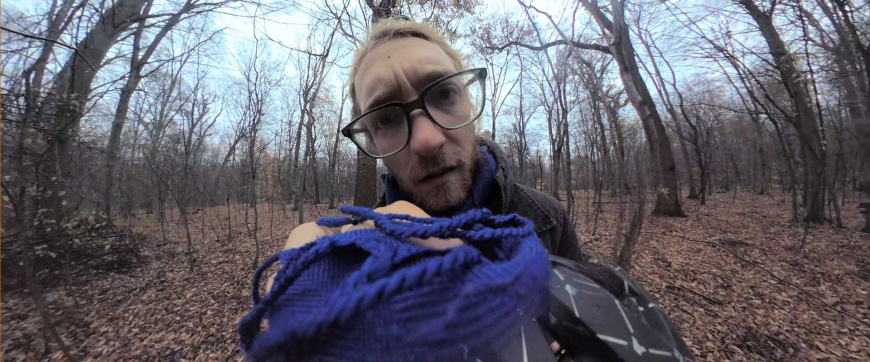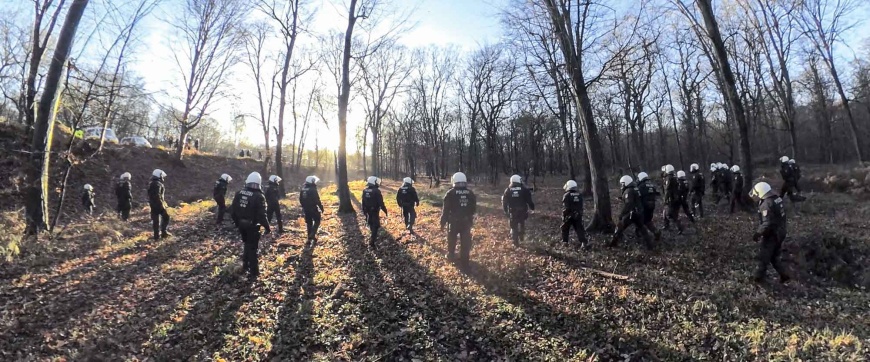Director's Statement
Fabiana Fragale, Kilian Kuhlendahl and Jens Mühlhoff about "Lonely Oaks"
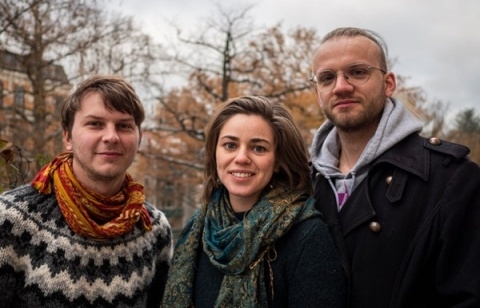
The three of us were good friends of Steffen. We experienced his death on 19.09.2018 in different ways. Jens was at home and received the news via Twitter that a journalist had fallen. Fabiana was on the train to Hambacher Forst when she received a call from Jens. Once there, she learned via a police press conference that the journalist who had fallen had died. Kilian was standing right under the trees when Steffen fell - with new memory cards for Steffen's cameras.
What unites us in our feelings is the feeling that our friend was taken away from us. None of us got to him again before the police lined up and built a privacy screen around his dying body. It was a death in public. And yet Steffen was so far away.
After his death, we felt a great helplessness. The worst thing was not to be able to find any immediately guilty instance. No one to whom we could have said: You took my friend from me. No one could be held responsible. So we directed our anger at our friend himself: Steffen, to whom it was more important at that moment to document and carry what had happened out of the forest than to secure himself at a height of 16 meters.
Politicians could not simply ignore the accident. Suddenly, NRW State Minister of the Interior Herbert Reul spoke about Steffen, and Minister President Armin Laschet called his parents. They used Steffen's death as an example of the danger posed by the occupation. And a part of the activists in turn used Steffen's death to show how the system goes over corpses. Only we remained silent. Steffen's death was so senseless: Because after the conflict, both the politics and the occupation in Hambach Forest reverted to the status quo before the eviction. Everything was the same as before. Only Steffen was missing.
With his sudden death, Steffen left behind an unfinished work. Numerous hours of footage were stored on various hard drives, including his own fatal accident. In the examination of this material, we now know: Steffen's death was truly senseless, but his decisions leading up to it were not. He, like the squatters, found himself in the predicament of not being able to rely on politics to work according to democratic processes. And so, just like the activists, he had no other means than to get involved on the ground with his body and his camera.
But Steffen's enthusiasm for the occupation and his radicalization were also always tinged with moral strife over the methods used. The use of his own body as a last resort finally hit him in its final consequence.
Thus, the use of one's own life as a political instrument became the guiding question in today's interviews with the activists Steffen encountered back then: "How far do we go to achieve our goals?"
We learn that the boundaries are fluid and that there is no right answer. New contradictions and ambivalences are found in every facet of resistance. But there is one thing that both the activists and Steffen agree on: they teach us that it is essential to stand up for one's ideals - even if they seem too big or naïve.
In the end, a film has emerged that always moves in the field of tension between Steffen's moral quibbling and the torness of the activists, between personal loss and the political will for change.


